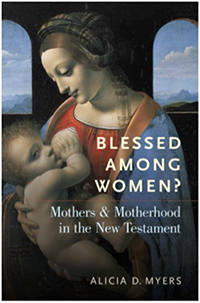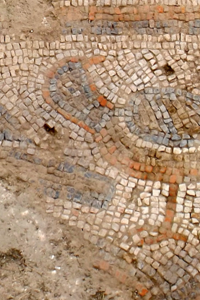

April 2021
Vol. 9, No. 4
Reading Inscriptions Alongside the New Testament
By D. Clint Burnett
Inscriptions, messages engraved on durable materials, play an important but underappreciated role in our earliest Christian documents, including in the canonical New Testament. Can we use them to better understand early Christianity?
References to inscriptions abound in the New Testament. The canonical Gospels—Matthew, Mark, Luke, and John—all record that an inscription was placed on Jesus’s cross providing the reason for his execution: he claimed to be “The King of the Jews” (Matt 27:37; Mark 15:26; Luke 23:38; John 19:19).
But there were many more references. Luke, the author of Acts of the Apostles, testifies that the apostle Paul used an inscription from an altar in Athens dedicated “to an unknown god” as an illustration for a speech about the God of Israel’s nature and the impending day of his eschatological wrath (Acts 17:23–31). Paul alludes to the practice of erecting inscriptions as he tries to convince his converts from Corinth that the ministry of the new covenant has greater glory than that of the old. The apostle identifies the latter covenant as being “engraved on stones”; an act with which his audience would have been familiar. If that covenant had glory, Paul says, how much more glory does the new covenant—infused with God’s life–giving Spirit—have (2 Cor 3:7–11)?
The author of Revelation notes the presence of inscriptions in the new age and the new Jerusalem. There are stones that have a new name written on them that only faithful Christ–confessors will receive (Rev 2:17). Believers who maintain their faith will become pillars in God’s temple and both God’s name and that of the new Jerusalem’s will be engraved on them (Rev 3:12).
The foundation stones of the new Jerusalem will be inscribed with the names of the twelve apostles (Rev 21:14) and the twelve gates through which one enters the new Jerusalem will be engraved with the names of the twelve tribes of Israel (Rev 21:12).
In short, the New Testament documents take for granted that their readers have a rudimentary knowledge of inscriptions, which means that contemporary readers must familiarize ourselves with them if we wish to read these texts responsibly.
Not only do we need to know about inscriptions to read the New Testament in a more sophisticated manner, but also inscriptions themselves are an invaluable resource for reconstructing the history of earliest Christianity and for interpreting the New Testament documents.
There are five main reasons. First, inscriptions are direct, unaltered primary sources. Unlike most surviving ancient literature, inscriptions have not been copied and recopied by scribes. This means that when we see an inscription we are seeing a tangible piece of the past that, depending on the circumstances, Jesus and some of his followers may have seen them. One such inscription was a series of inscribed boundary markers, which were erected between the Court of Gentiles and the Court of Women warning Gentiles who passed by a certain barrier of the death penalty.
Second, the sheer number of extant inscriptions attests to their importance. Literally, hundreds of thousands of inscriptions from the Greco–Roman world have survived, somewhere between 500,000 and 800,000, and new ones are discovered every year. One consequence of this large number is that we possess a diverse dataset of material with which to reconstruct the history of earliest Christianity. Some inscriptions were set up by private individuals as durable advertisements, while others were erected by governmental bodies for official and sometimes propagandistic purposes. The commonest type of surviving inscription is personal: funerary inscriptions also known as epitaphs. Other common types of public and private inscriptions include manumissions of slaves, curse tablets, graffiti, governmental decrees, letters, inventories of temples, law codes, and messages honoring and worshiping rulers, benefactors, and above all the gods.
Third and related to the previous observation, the large number and variety of inscriptions are due to the diversity of individuals who set them up. Unlike Greco–Roman literature, most of which is by elite men, inscriptions were set up by elite men and women as well as non–elite men and women—artisans, gladiators, and slaves. One direct consequence of this is that inscriptions provide windows into aspects of the Greco–Roman world that literature of the period does not discuss.
For example, inscriptions provide a corrective to an androcentric view of Greco–Roman history showing that women were not shut up in their houses, but were a vital part of the Roman economy, that many of them controlled their finances, that wealthy women were benefactresses, and that women were public priestesses and leaders of cultic associations, including synagogues. One benefactress, in particular, was a very wealthy woman named Julia Severa from Acmonia, Phrygia (in modern-day Turkey) who around 100 CE paid for the construction of a Jewish synagogue: “This house was built by Julia Severa. . .” The interesting thing about Julia is that she was also an imperial cult high priestess. In a somewhat related manner, we see Jewish and Christian women in the New Testament who are benefactresses, leaders, and teachers of early Christian churches (Acts 16:14–15; Luke 8:1–3; Rom 16:1–2; Acts 18:24–28; Phil 4:2–3; Rev 2:20).
Fourth, inscriptions provide evidence for local customs, cults, and traditions of Greco–Roman cities that would otherwise be lost. Almost all our surviving Greco-Roman histories focus on historical figures who and cities and events that were of consequence for history, e.g., the Greco–Persian wars, Alexander the Great, Julius Caesar, Rome, etc. These sources tell us little about the lives of ordinary people and average cities. Inscriptions, however, fill in these gaps providing information about the organization of local governments, the identities of deities and humans whom certain cities worshiped, and the daily lives of individuals in these cities. Such data allow for a level of contextualization of the earliest Christian documents that Greco–Roman literature and even papyri do not.
To provide an example, the number/name of the beast in Rev 13:18, 666, has long baffled interpreters. Given that Greek letters doubled as numbers, every letter, word, group of words, and even a sentence or sentences had a numerical value. The manner of calculating such values could be complex. For instance, ina second-century CE inscription from Sparta, which is a dedication to the goddess Artemis Orthia, the numerical value of every third line equals 2,370:“The leader of the young men Leonteus dedicated (this iron sickle as a) gift to (Artemis) Orthia: 2,730. After he won the musical (Moa) contest and he received this prize: 2,730. And (my) father honors me with an equal number of lines: 2,730.”
Inscriptions showcase that disguising a person’s name with numbers was a common practice known as name calculation (known in Hebrew as gematria), which was geared toward people with enough information to decipher the name/number. For example, a graffito from an elite house in Ephesus, one of the churches to whom Revelation was addressed (Rev 2:1–7), records the number of the woman that a man loves and invites a certain person, Gorgus, to solve the riddle: “Now again I love the woman among the gods whose number is 865. If you are Gorgus who finds it, then write it below.” Gorgus (or someone else) was equaled to the task and solved the name calculation of this woman, for in a second hand directly underneath the graffito another person wrote, “Clodia,” which has a numerical value of 865.
Finally, occasionally inscriptions allow for the reconstruction of events associated with earliest Christianity. For example, an inscription from Jerusalem known as the Theodotus Inscription provides the only known piece of Second Temple Jewish material culture corroborating the testimony of Acts 6:9; 24:12 that Jewish synagogues existed in Jerusalem in the late Second Temple period.
Another inscription serves as the chronological linchpin of the apostle Paul’s life and evangelistic travels, providing concrete extrabiblical evidence that Gallio served as proconsul of Achaea in 52 CE, either from 51 to 52 or 52 to 53 CE. The inscription is a letter that the emperor Claudius (who reigned from 41 to 54 CE) sent to the city of Delphi, Greece in which he mentioned Gallio.
According to Acts 18:12–17, Paul was dragged before the tribunal of Gallio in Corinth. This means that we can place Paul confidently in Corinth in 52 CE and thence date more accurately other events associated with Paul’s life and activities.
In sum, the New Testament documents demand that we as readers are acquainted with inscriptions and how they functioned in the Greco–Roman world. These numerous, diverse, primary, and above all direct sources from the Greco–Roman world serve as a fount of information for reading the New Testament texts in their ancient contexts and reconstructing the history of earliest Christianity.
Clint Burnett is Visiting Scholar at Boston College (Chestnut Hill, MA).
For further reading:
D. Clint Burnett’s podcast, Bibl·e·pigraphy available on Apple Podcasts and at biblepigraphy.com.
Want To Learn More?
Blessed Among Women? Mothers and Motherhood in the New Testament
By Alicia D. Myers
Mothers and motherhood appear throughout the New Testament but males get most of the attention. With perfection now completed by means of Christ, where did that leave women, including mothers? Read More
 San Miceli in Sicily: Excavation of an early Christian Basilica and Village
San Miceli in Sicily: Excavation of an early Christian Basilica and Village
By Randall W. Younker and Élisabeth Lesnes
For decades Andrews University has undertaken long-term research projects in Jordan, at Hesban and elsewhere. But new challenges are necessary. So we decided to trade falafels for pasta and launched a new project in the town of Salemi in the province of Trapani in the northwestern “corner” of Sicily. Read More

